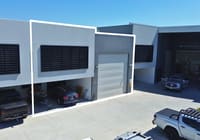
Buying below replacement cost can bolster property investment returns
Shrewd investors may want to seek out commercial properties selling for below replacement cost because they can produce market-beating returns.
Replacement cost refers to the total cost in today’s dollars of replicating a property, including land acquisition, construction and other associated costs.
Buying below replacement cost means that the cost for another investor to develop replicate the same sort of property in the same area would be prohibitive and rents would be uncompetitively high, making for a high barrier to entry for competition.

The new owner of the asset bought for below replacement cost doesn’t need to seek outsized rents to cover the financing, which can help secure stable tenants for the building. This high margin of safety makes it easier to get buy-in from financial institutions and investors.
And any required capex is generally cosmetic or for refurbishment, and so is more manageable and less prone to cost blowouts than major building projects.
This takes another commercial property downside risk off the table and helps the asset owner to meet market demand relatively quickly.
This is particularly important in the current period of high inflation and persistently rising construction costs.
Properties bought below replacement cost tend to be more resilient in difficult markets and their inherent value proposition provides significant protection against the downside.
And there’s enhanced upside potential as well. The lower entry value metric means that the capital gains on exit will be larger as a percentage of the purchase cost than otherwise.
Opportunities to buy below replacement cost are mostly in office and retail properties because the value of the buildings on the site account for so much of the purchase price.
For warehouse and logistics properties, most of the purchase price is for the land itself, with the structures atop it only a small proportion of the whole, so there is less arbitrage opportunity.
A recent example is investment manager Haben’s purchase of a 50 per cent stake of Westpoint Shopping Centre in Blacktown in Sydney’s West at a $900 million valuation.
Haben told potential investors they could expect 6.6 per cent in average annual distributions which would be paid quarterly, and at least 17 per cent pre-tax internal rate of return after fees, according to marketing material seen by The Australian Financial Review’s Street Talk column.
The 7.3 hectare main site is anchored by blue-chip tenants including Woolworths, Coles and Aldi, and runs at a 96.4 per cent occupancy rate.
The purchase price represents a 40 per cent discount to replacement cost, according to an analysis by another fund manager, MP Group International. There is constrained supply of retail in the surrounding area “because of the dynamic around expensive construction prices, blown out time frames and land cost, meaning high barriers to entry”, MP Group says.
The shopping centre also has strong fundamentals, located in a high-growth part of Sydney with a considerable infrastructure spend in the coming years.
The property is held in a single-asset, close-end, unlisted fund. The single-asset structure allows for more transparency over the property’s performance and if the asset performs strongly its returns won’t be diluted by other lesser performing assets in the fund, although the converse is also true – a poor performance by the asset won’t be offset by a better performance from other assets.
More capital appreciation
There other examples. The HomeCo Daily Needs REIT is selling the McGraths Hill Home shopping centre in Sydney’s north-west for about $55 million, which is also about 40 per cent below replacement cost.
And there will be other properties selling for below replacement cost due to the persistent rise in inflation over the past few years. This will lead to fewer new shopping centres and office towers being built and over time will constrain supply, which should push up rents and accelerate capital appreciation for existing assets.
As always due diligence ahead of a purchase is crucial. Investors should consult a builder to get an idea of what it would cost to replicate the building.
They should also treat the investment opportunity with some initial scepticism and investigate why the property is available for less than replacement cost. It might be that the building has structural issues or the profile and attractiveness of its location are changing. Unless they can be satisfied about this, then the property might be less of an opportunity and more of a liability.
And all the usual considerations for commercial property investment apply as well. It still needs to be a quality asset in a good location with good services.
Investors with the patience and nous to find property below replacement will reap the rewards, both in the short term and the long term. They should also consult a builder or a quantity surveyor.











